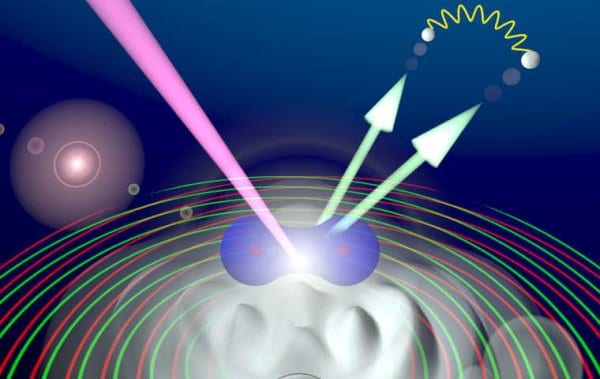While a single electron will behave as a purely quantum entity, the mere presence of another electron is enough to cause the electron to make the transition from quantum to classical behaviour -- according to an international team of physicists who have done a bizarre yet simple version of the famous “double slit” experiment. The result could have important implications for those seeking to create solid-state quantum computing devices, where minimizing electron-electron interactions is a key challenge (Science 318 949).

The wave-like, or quantum, behaviour of individual particles is rarely seen because particles tend to interact with their environment — for example, via gravity, electrical interactions or thermal radiation. These interactions result in a transition from quantum to classical behaviour called decoherence. Decoherence has been observed in electrons, atoms, small molecules and more recently in macroscopic objects, such as C60 and C70 molecules.
All these experiments involve passing the highly isolated particles or molecules though a double-slit and watching as the interference pattern — which is a signature of quantum behaviour — becomes weaker as the particles interact with their environment.
However, researchers were unsure as to the minimum level of interaction needed for decoherence to occur. Now, Reinhard Doerner of the University of Frankfurt in Germany and colleagues have helped answer this question by studying what they call the “simplest ever double-slit” — a hydrogen molecule, which comprises two electrons and two protons.
The researchers began by firing a single high-energy photon at a hydrogen molecule, which ejects the two electrons from the molecule. One of these electrons and the two protons form a simple particle/slit system. This electron forms a quantum interference pattern as it passes through the slit. The second electron, which moves much slower than the first, acts like a minimal environment for the other electron. It interacts with the first electron via Coulomb interactions, leading to a loss of contrast in the interference fringes observed in the angular distribution of this electron.
The experiment demonstrates that only a very small number of particles is needed to turn a quantum system into a classical one. “The fragmentation of the hydrogen molecule is a four-body problem that can also be solved numerically using today’s computers,” Doerner told physicsworld.com. “Our results could now provide a benchmark for some of the most advanced theories in few body physics.”
Next, the team, which includes scientists from the US, Spain and Russia, plans to look how interference is destroyed by breaking the symmetry of the hydrogen molecule. They will do this by substituting one of the hydrogen atoms for its heavier isotope deuterium.



